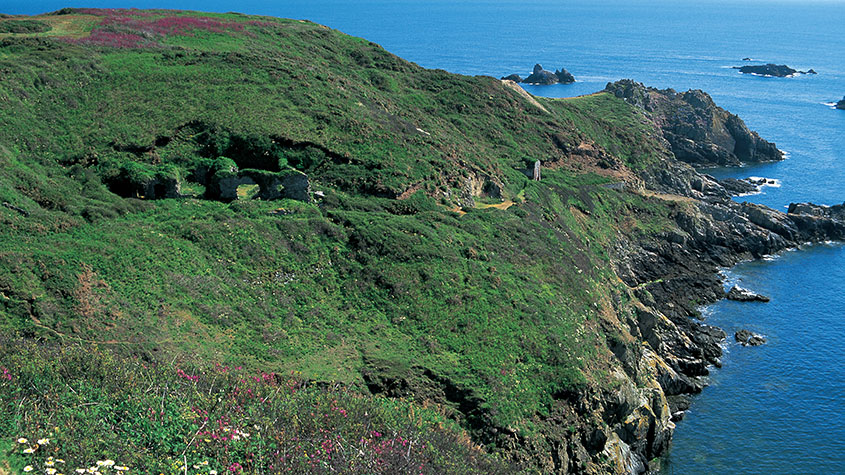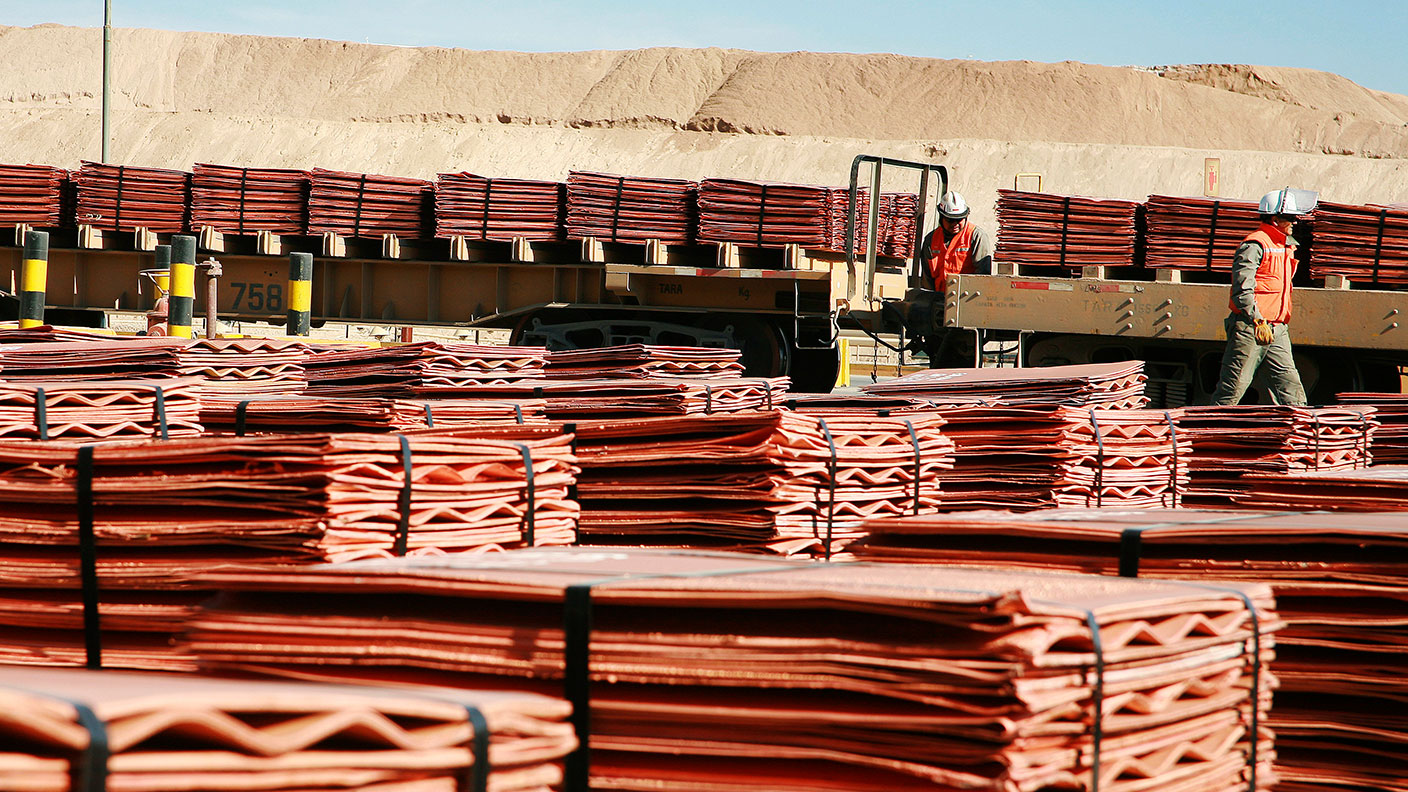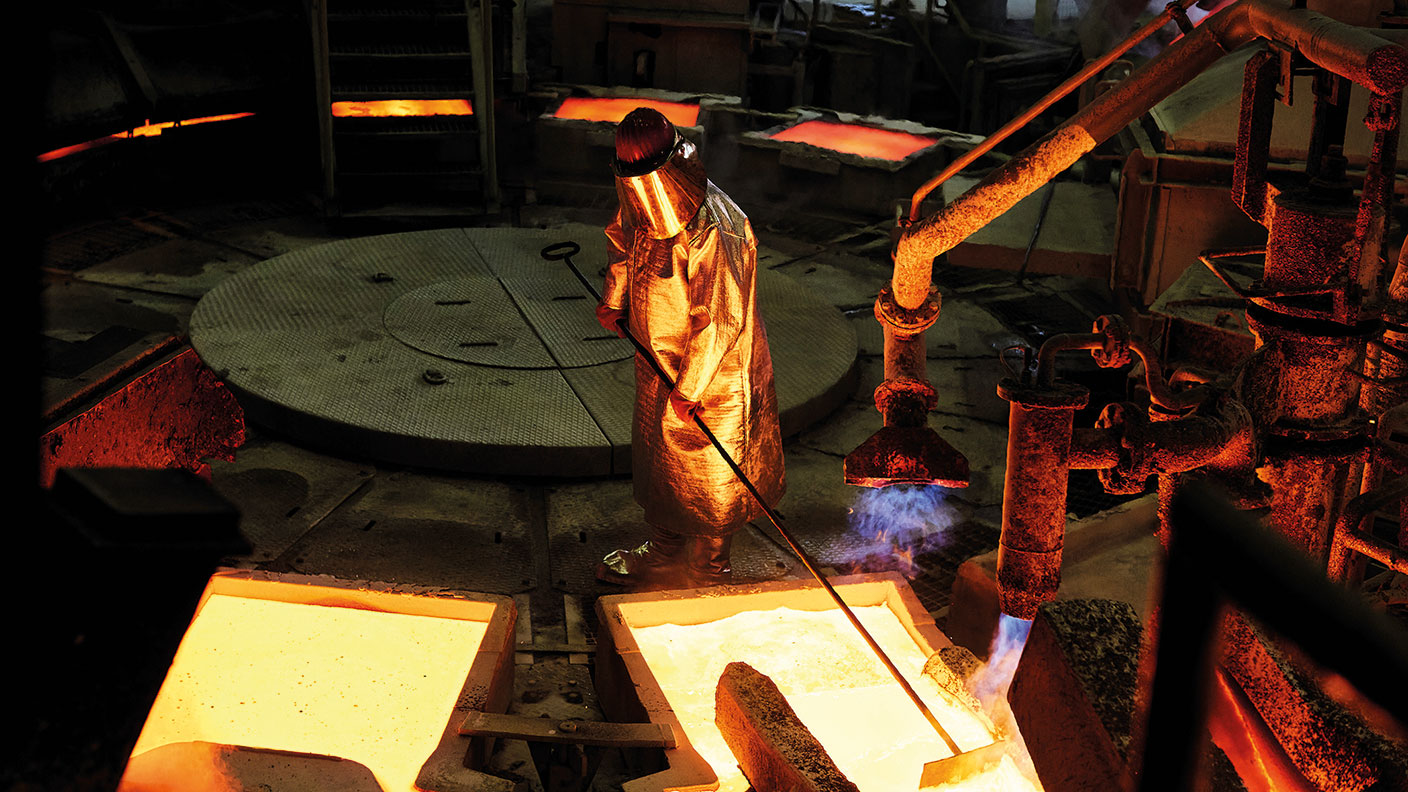The world’s turned full circle – it’s time to buy commodities again
David C Stevenson tips three funds that will do well as resources stocks rebound.

David C Stevenson tips three funds that will do well as resources stocks rebound.
This week I'm going to get all contrarian and suggest you raise your exposure to funds investing in commodities. I think we're not far from seeing the bottom for this troubled sector, especially for the miners and big energy companies.
Investors do not feel well disposed towards commodities right now. They've always been viewed as a classic alternative asset class: good for diversification, protecting against volatility in other assets, and shielding against inflation. But even those attributes are being questioned: analysts at UBS boldly declared before Christmas that the "outlook for commodities is bleak".
MoneyWeek
Subscribe to MoneyWeek today and get your first six magazine issues absolutely FREE

Sign up to Money Morning
Don't miss the latest investment and personal finances news, market analysis, plus money-saving tips with our free twice-daily newsletter
Don't miss the latest investment and personal finances news, market analysis, plus money-saving tips with our free twice-daily newsletter
They argue that loose central-bank policy and inflation fears have boosted commodity demand in recent years. But now there is talk of tightening policy, particularly in the US.
That's bad news for commodities because they pay no income, unlike equities and bonds. When interest rates and incomes from financial assets rise, commodities will look less attractive.
Secondly, says UBS, the commodities boom in the 2000s encouraged companies to increase production. This supply is now hitting the market, meaning it will "likely be oversupplied in coming years, putting downward pressure on prices".
Finally, growth in emerging markets, a key engine of commodity demand, is likely to be lower than it was during the boom years as well.
Brewin Dolphin analyst Nik Stanojevic sums up why many British investors are going cold on prospects for the big UK-listed mining giants. The "big worry... is the large amount of iron-ore supply due to come on over the next six months. Global steel production growth of 3%-4%, which implies a Chinese growth rate of around 5%-6%, equates to iron-ore requirements of around 60 million to 80 million tonnes (mt) in 2014. However, production capacity from the top producers alone (Vale, Rio Tinto, BHP Billiton) could increase by over 100mt by mid-year and 160mt a year by the fourth quarter."
Beyond the mining sector, the consensus in the City and on Wall Street is that commodity prices overall will most likely be flat for the rest of 2014. French bank Socit Gnrale recommends that long-only investors increase their exposure to base metals and energy, while underweighting gold, silver and agriculture. I think this is probably sensible.
I agree with Socit Gnrale's bearish assessment on prospects for gold for me, it's an outright sell, with prices likely to plunge to near-$1,000 an ounce.
Economy gains momentum
However, I believe we are reaching a turning point for the global economy and markets. A stack of recent research suggests that everyone has underestimated the pace of recovery. Kevin Gardiner, Barclays' chief investment officer for Europe, sums it up when he says that, "if anything, the US economy has been gaining momentum".
His team reckons US growth in 2013's second half was close to 4% "twice as fast as envisaged last summer" and so has raised its forecasts for 2014. Stronger growth will help sustain US corporate profits. Even in the eurozone "a more tepid GDP upturn might yet translate into a vigorous rebound in earnings if banks are through the worst".
This optimism has to be tempered by realism on what might happen to equity markets next ie, a correction. Gardiner is probably right to remind us that "stocks are no longer cheap. So as the economic outlook starts to look brighter, don't be surprised if equity returns start to fade by comparison."
Yet commodity shares have already had a terrible time in the last few years. So even if the broader markets do take a breather, the resources sector still has room to play catch-up.
I'd agree with the conclusions drawn by Parala, a macroeconomics research outfit. This independent firm ranks key asset classes, such as commodities, using a wide range of economic signals.
Last week, chief partner Steve Goldin said: "There has never been an economic recovery without a recovery in commodity prices (particularly energy and industrial), and given the economic improvements seen in measures such as the PMI index, a rally in commodities is really just a question of time."
According to Parala's in-house asset-allocation system, both industrial metals and energy markets are now the most likely to outperform.
Parala isn't alone. Last week Cantor Fitzgerald analysts brought out a paper trying to link these broad market cycles together with share prices for commodity companies. The chart below, first developed by Fidelity, explains this cycle and how each of the four phases affects different asset classes.

Source: Fidelity Worldwide Investment
The phases are: correction (where investors shun risk and buy conservative' investments, such as bonds and utility stocks); recovery (when investors start taking more risk); expansion (when economic growth ramps up, boosting more heavily indebted companies in sectors such as financials, technology and real assets); and excess liquidity, when the economy begins to overheat, inflation rises, and investors chase whatever's going up.
Overheating warms commodities
Cantor Fitzgerald reckons we are now at a turning point. "The macro data and policy guidance from major central banks suggest that we are currently in expansion and should soon be heading into the next phase If true, the cyclical growth stocks which have led gains to date (and now trade on high double-digit price-to earnings multiples) should make way for the commodity-related stocks that have lagged the rally and now appear attractively priced."
If it's right, then we're halfway through the recovery' phase and about to head into excess liquidity' and overheating', which should be good news for commodity stocks.
To take advantage, you could always buy into individual commodity plays such as BHP Billiton or Rio Tinto. But I'd rather avoid individual stocks and focus on funds instead.
The three best commodity funds
Luckily, there aren't that many choices, and most of the very best funds are investment trusts. You've got three main choices, each of which offers its own unique strengths although all of the highlighted funds boast a decent dividend yield of more than 4% a year.
The three funds are: BlackRock Commodities Income (LSE: BRCI), which yields 5.7%; BlackRock World Mining (LSE: BRWM) on a yield of 4.7%; and City Natural Resources (LSE: CYN), yielding 4.3%.
These trusts are high-beta', says Cantor Fitzgerald (ie, they tend to amplify moves in the rest of the sector), "and have outperformed the broader materials sector over time". They also trade on discounts to their net asset value (NAV). In other words, you can buy shares in the trusts for less than their underlying portfolios are worth.
You could even move your money from one trust to another as the bull market in commodity stocks becomes apparent, then gains speed and confidence. For the cautious investor, start off with the Blackrock Commodities Income fund.
So far this specialist, dividend-focused fund has avoided the worst of the commodity bear market by focusing on the energy sector. As Numis points out, at the end of November the portfolio was 60% in energy companies, the largest proportion in its history.
More recently, the manager, Richard Davis, has been taking some profits on energy exploration and production stocks that have done well, and putting the money into integrated energy companies (such as Shell and BP), and "selected mining stocks", says Numis.
Davis is still very cautious about calling a big upturn in commodity markets. Like all commodity managers, he's heartened by public declarations from the big mining-company bosses that the capital expenditure orgy is over, but he suspects that the markets will need much more convincing before they start to buy the shares of the big miners.
However, if the commodity cycle does start to turn more vigorously bullish, I'd consider moving on to the BlackRock World Mining investment trust, which is run by Evy Hambro and Catherine Raw.
This fund has a much more mainstream mining focus (as you'd expect from the title), with stakes in Rio Tinto, BHP Billiton and Glencore accounting for 37% of the fund's total holdings.
As industrial metal prices begin to pick up, you'd expect shares in this far more speculative fund to pick up sharply too, with the current 6% discount to NAV likely to narrow.
I'd also expect the dividend yield of just under 4.5% a year to decline as share prices start to rise, although it's worth remembering that many of the big miners have said that they'll try to increase their dividend payouts over time, helped by tighter control on investment spending.
And once we enter a full-throttle rebound in commodity stocks, I'd expect my third fund to come into its own. The City Natural Resources trust is managed by a team from the hedge fund CQS, and has traditionally been seen as a tiny bit more adventurous than its BlackRock peers.
You won't see huge holdings in the likes of Rio Tinto, or even the big energy companies, inside the City Natural Resources portfolio it's much more mid- and small-capfocused, with an eclectic mix that includes everything from palm oil plantations to energy infrastructure plays.
Crucially, the discount is much bigger at 13%, and the current dividend yield a tiny bit lower at 4.1% per year.
Get the latest financial news, insights and expert analysis from our award-winning MoneyWeek team, to help you understand what really matters when it comes to your finances.

David Stevenson has been writing the Financial Times Adventurous Investor column for nearly 15 years and is also a regular columnist for Citywire.
He writes his own widely read Adventurous Investor SubStack newsletter at davidstevenson.substack.com
David has also had a successful career as a media entrepreneur setting up the big European fintech news and event outfit www.altfi.com as well as www.etfstream.com in the asset management space.
Before that, he was a founding partner in the Rocket Science Group, a successful corporate comms business.
David has also written a number of books on investing, funds, ETFs, and stock picking and is currently a non-executive director on a number of stockmarket-listed funds including Gresham House Energy Storage and the Aurora Investment Trust.
In what remains of his spare time he is a presiding justice on the Southampton magistrates bench.
-
 The shape of yields to come
The shape of yields to comeCentral banks are likely to buy up short-term bonds to keep debt costs down for governments
-
 The sad decline of investment clubs – and what comes next
The sad decline of investment clubs – and what comes nextOpinion Financial regulation and rising costs are killing off investment clubs that once used to be an enjoyable hobby, says David Prosser
-
 These 2 stocks are set to soar
These 2 stocks are set to soarTips The returns from these two aluminium and tin stocks could be spectacular when the commodity cycle turns says David J Stevenson.
-
 The best ways to buy strategic metals
The best ways to buy strategic metalsTips Weaker prices for strategic metals in the alternative-energy sector are an investment opportunity, says David Stevenson. Here, he picks some of the best ways to buy in.
-
 A lesson for investors from a ill-fated silver mine
A lesson for investors from a ill-fated silver mineAnalysis Mining methods may have changed since the industry’s early days, but the business hasn’t – digging ore from the ground and selling it at a profit. The trouble is, says Dominic Frisby, the scams haven't changed either.
-
 The natural resources industry is in a tight spot – which is bad news for the rest of us
The natural resources industry is in a tight spot – which is bad news for the rest of usOpinion The natural resources industry is in a bind. We need it to produce more energy and metals, but it has been starved of investment, plagued by supply chain issues, and hobbled by red tape. That’s bad news for everyone, says Dominic Frisby.
-
 How to invest in the copper boom
How to invest in the copper boomTips The price of copper has slipped recently. But that’s temporary – the long-term outlook is very bullish, says Dominic Frisby. Here, he explains the best ways to invest in copper.
-
 Why investors should consider adding Glencore to their portfolios
Why investors should consider adding Glencore to their portfoliosTips Commodities giant Glencore is well placed to capitalise on rising commodity prices and supply chain disruption, says Rupert Hargreaves. Here’s why you should consider buying Glencore shares.
-
 How to invest in the multi-decade boom in industrial metals
How to invest in the multi-decade boom in industrial metalsTips The price of key industrial metals has already begun to rise. The renewable energy transition will take them higher, says David Stevenson. Here's how to profit.
-
 Avoid China’s stockmarket – here’s what to invest in instead
Avoid China’s stockmarket – here’s what to invest in insteadOpinion China’s stockmarket is not a good place for investors to be. But you can't just ignore the world's second-largest economy, says Dominic Frisby. Here, he picks an alternative China play.